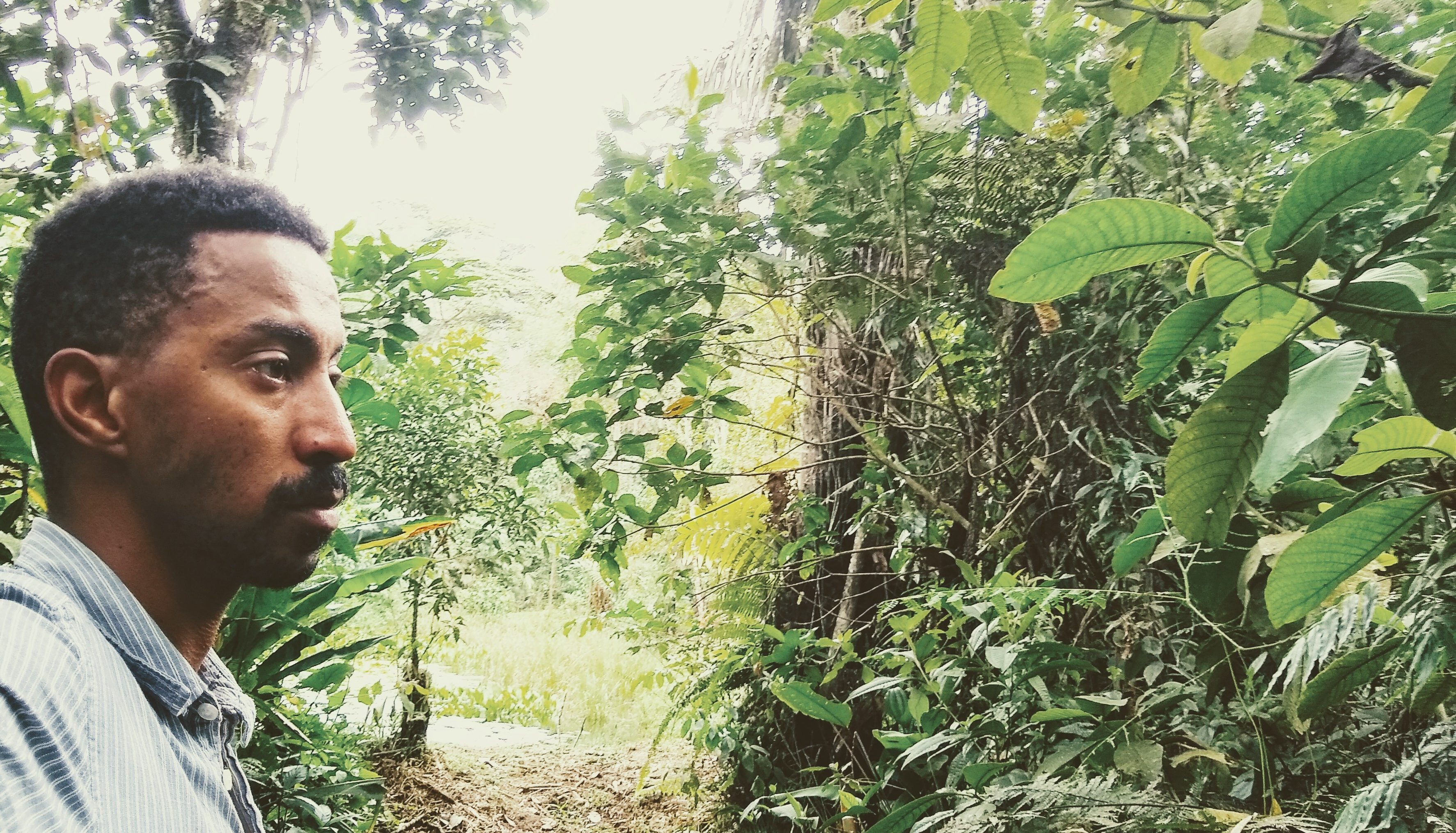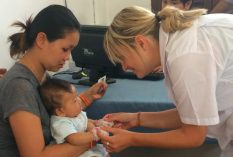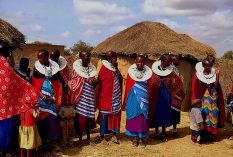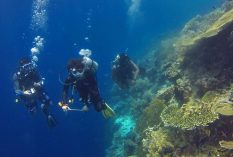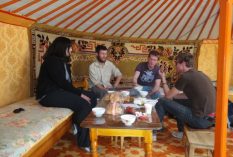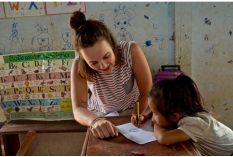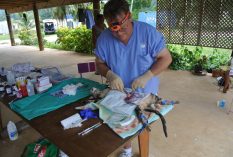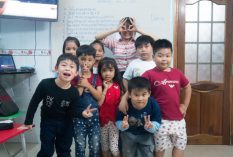“This marks the first two weeks of an incredibly eye-opening and enriching Amazon Forest Food and Culinary Arts Internship.”
Day 1
I arrived by plane at Mariscal Sucre International Airport early in the morning and quickly grabbed a taxi to a quaint hostel in Quito within the Tababela region.
Day 2
A good portion of the morning was spent on the road from Quito to Tena, Ecuador where the organization’s headquarters is based. I was greeted by a quiet and calm driver accompanied by two additional passengers for the journey to Tena. Our morning drive was marked by the dramatic scenery of huge cliff faces, cascading waterfalls, and a diversity of green vegetation blanketing high steep mountains up to the roadside. This drive from the dry cool Sierra’s of Quito moving southeast to the Amazon lowland river city of Tena, was a splendid introduction to the natural beauty and diversity of Ecuador.
Day 3
The project briefing and introductions with my new host family were complete. I started the day with an early breakfast before sunrise and a lively discussion in broken Spanish with the host family about public transportation and navigating the cities of San Pablo, Archidona and Tena. The rest of the day was spent traversing the gorgeous, humid, lush chakra farm with Don Clemente, the head of the kichwa host family. It was explained by Don Clemente that this chakra-farm was an intelligently established and managed system stewarded over many generations of his family members. We harvested several tropical foods like yuca, fern heads and large bamboo stems throughout the day while discussing the colorful history of the landscape.
Day 4
Don Clemente and I were up before sunrise, earlier than normal, and with heavy rain beating down on us. We had eaten breakfast quickly and were making headway up a granite road which served as the only clear path for cars and pedestrians to Don Clemente’s farm-chakra. The rest of the day was spent intensively harvesting fern heads, maito leaves for cooking Amazonian food, tilapia from Clemente’s cascading ponds, bamboo stems, a variety of peppers, yuca from the soil below, and sweet salat fruit from the base of thorny cacti like plant species. We broke up the day with firewood cutting and detailed discussion of plant species that had been collected.
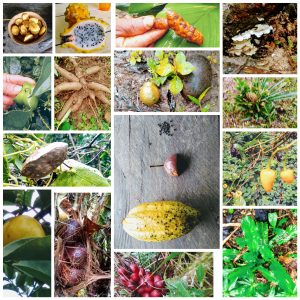
Day 5
I had the opportunity to visit an intercultural primary and secondary school in San Pablo, Napo, Ecuador. This visit to the school was spontaneous and initiated through an invite by my kichwa host family. They had administrative business to take care of at the school and brought me along for the ride. The head of the kichwa household, Don Clemente made the introduction with school officials and instructors. This introduction quickly turned into an invite by a few instructors to have me in some of their classes to talk about gastronomy and agriculture. I accepted the invite and worked with the instructors on the details.
Day 6
The kichwa host family and I were out the door and trekking up to the chakra-farm at seven in the morning to prepare for a traditional amazon dinner booked at the restaurant. We all carried a load of cooking equipment or fresh local amazon produce in large baskets slung over our back and secured with a rope handle resting on our heads. Dona Elena and I started food prep and equipment cleaning. While food prep was going Don Clemente started two open fires under a bamboo shelter and had water boiling straight away. By noon the kitchen was running like a well-oiled machine with more family members coming in to assist with food harvest from the chakra, food prep of over twenty different foods, tending the fires, and dining room preparation. The thirty restaurant customers arrived at sunset and started with a tour of the farm before digging into a magnificent amazon feast.
Day 7
I spent the day exploring the closest major outpost city of Archidona. The day was spent navigating the streets for the best coffee shops, utilizing internet cafes, and sampling food in Mercado’s big and small.
Day 8
The day was spent in the chakra-farm clearing new footpaths with a machete, sampling food/medicine from the forest, and discussing the benefits of each plant from a consumption-flavor or ecological standpoint.
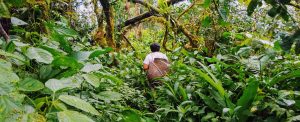
Day 9
The day was spent at the local bilingual international school speaking to eleventh graders about gastronomy and agriculture.
Day 10
My time was spent resting and hanging around the house with the host family. I hopped on the bus to Archidona in the evening to restock on home care supplies and sample the street food scene only available after sunset.
Day 11
The host family and I were out the door, in the restaurant and cooking by seven-thirty in the morning for another dinner service. At around noon a group of the cooks including myself left the kitchen for the chakra to harvest burlap sacks of guayusa which is a special green or brown leaf traditionally consumed by the kichwa as a tea and is exported internationally as an ingredient in energy drinks. This day of cooking and harvest ended around a table of amazing amazon food and with new friends from the United States. The evening ended with heartbreaking goodbyes to my host family.
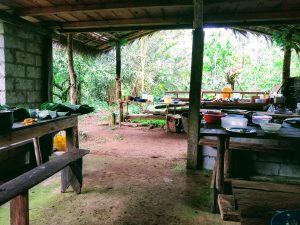
Day 12
I spent the day exploring the city of Tena, sharing my observations with the organization, and preparing for the long drive back to Quito.
Day 13
This last day was spent curating photos, sending my virtual goodbyes to new friends, and journaling about the sublime internship. It was full of humor, laughter, the occasional awkwardness when parts of a conversation get lost in translation, vibrant indigenous customs, and an endless bounty of amazon foods.
Let’s connect: www.petrosmaskal.com
Amazonian Forest Foods and Culinary Arts in Ecuador

